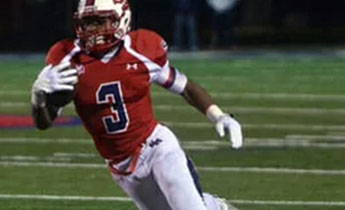With many kids heading starting school this week and next, here’s a look at one of our favorite back-to-school stories: the tale of a high school football star heading to the University of Indianapolis this month on scholarship. But his road to university wasn’t an easy one.

Tyre Lee, 18, of Robbins, Ill., was star running back of the St. Rita High School football team. But his future in the game was nearly cut short after his ankle snapped while being tackled during a football game his junior year.
That was November 2013, and Lee says he could “feel the break.”
His ankle swelled and despite attempts to cast the fracture, he would need surgery.
Lee went confidently into the procedure, which left him with a plate and screws in the ankle joint, including what he describes as “big ones” in the tibia (shinbone) and fibula (calf bone). The bottom ends of these two leg bones connect the ankle to the foot bones.
“Severe twisting injuries to the ankle many times result in fractures of the tibia or fibula within the ankle joint, which is what happened in Tyre’s case,” says Ari Kaz, M.D., an orthopedic surgeon at the Chicago Center for Orthopedics at Weiss. Dr. Kaz specializes in foot and ankle conditions, and also is a clinical assistant professor at the University of Illinois at Chicago.
“The surgery to fix the fracture is straightforward, but a great deal of precision is needed,” Dr. Kaz adds.
For Lee, Dr. Kaz’s attitude made all the difference. “Dr. Kaz gave me the confidence I needed before surgery that I would comeback better than ever,” Lee notes. “He said I have nothing to worry about, that I could continue to play ball.”
And he has. After a month of pushing through physical therapy, and rebuilding his mental strength during his times of rest, he says his ankle feels different, but he’s “stronger than ever.”
“In many ways, his ankle is stronger than before because of the plate and screws he has holding it together,” says Dr. Kaz.
Ankle injuries are common among athletes. According to the American Academy of Orthopaedic Surgeons (AAOS), one-quarter of athletic injuries are foot- and ankle-related.
Whether the athlete is playing at the pee-wee, high school, or collegiate level, the injured athlete to exercise both the body and mind. Staying confident, Lee says, is key in the recovery process.
He says that now, because of the medical care he received, he’s able to confidently approach his college career.
